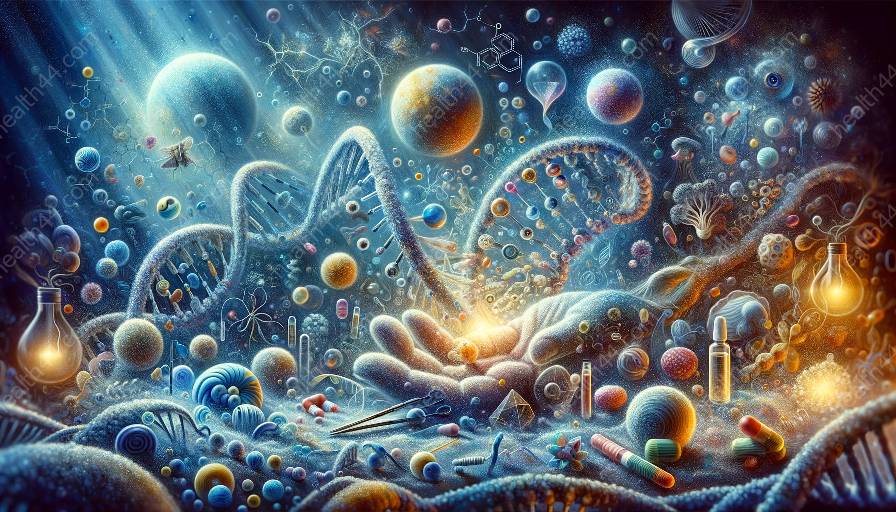In genetics, the study of epigenetics has unveiled a captivating world of gene regulation. This article delves into the mechanisms by which epigenetic modifications control the silencing and activation of genes, shedding light on the intricate interplay between epigenetics and genetics.
Epigenetics and Gene Regulation
Epigenetics refers to the study of heritable changes in gene expression that do not involve alterations in the DNA sequence. Gene regulation, influenced by environmental factors and developmental cues, is orchestrated by epigenetic modifications. These modifications, including DNA methylation, histone modifications, and non-coding RNAs, play a pivotal role in governing gene activity.
Epigenetic Modifications and Gene Silencing
Epigenetic modifications, such as DNA methylation and histone deacetylation, can lead to gene silencing. DNA methylation involves the addition of a methyl group to the cytosine residue in CpG dinucleotides, resulting in the repression of gene transcription. Histone deacetylation, on the other hand, promotes the condensation of chromatin, rendering the associated genes inaccessible for transcriptional machinery.
DNA Methylation and Silencing
The process of DNA methylation, catalyzed by DNA methyltransferases, serves as an essential mechanism for gene silencing. Methyl groups added to the DNA can alter the chromatin structure, leading to the inactivation of specific genes. This epigenetic modification plays a critical role in various cellular processes, including embryonic development and maintenance of tissue-specific gene expression patterns.
Histone Modifications and Silencing
Histone modifications, such as methylation and deacetylation, contribute to gene silencing by modifying the structure of chromatin. Histone deacetylation, facilitated by histone deacetylases (HDACs), results in the tightening of chromatin structure and impedes gene expression. Additionally, histone methylation patterns, controlled by histone methyltransferases, are associated with gene silencing in a context-dependent manner.
Epigenetic Modifications and Gene Activation
Conversely, epigenetic modifications can also lead to gene activation by promoting an open chromatin structure and facilitating transcriptional access to specific genes. Histone acetylation and DNA demethylation are prominent epigenetic marks associated with gene activation.
Histone Acetylation and Activation
Acetylation of histone tails by histone acetyltransferases (HATs) results in the relaxation of chromatin structure, allowing for enhanced transcriptional activity. This epigenetic mark promotes gene activation by recruiting transcriptional machinery and enabling the transcription of specific genes in response to various stimuli.
DNA Demethylation and Activation
DNA demethylation, catalyzed by DNA demethylases, plays a crucial role in the activation of genes. Demethylation of specific regulatory regions of DNA allows for the activation of gene expression, particularly during processes such as cellular differentiation and response to environmental cues.
Complex Interplay of Epigenetic and Genetic Factors
The interplay between epigenetic and genetic factors in regulating gene silencing and activation is a complex and intricately orchestrated process. Epigenetic modifications influence the activation and silencing of genes, ultimately impacting cellular functions, organismal development, and susceptibility to diseases. Understanding the dynamics of epigenetic regulation provides profound insights into the intricate mechanisms governing gene expression and holds immense potential for therapeutic interventions.


